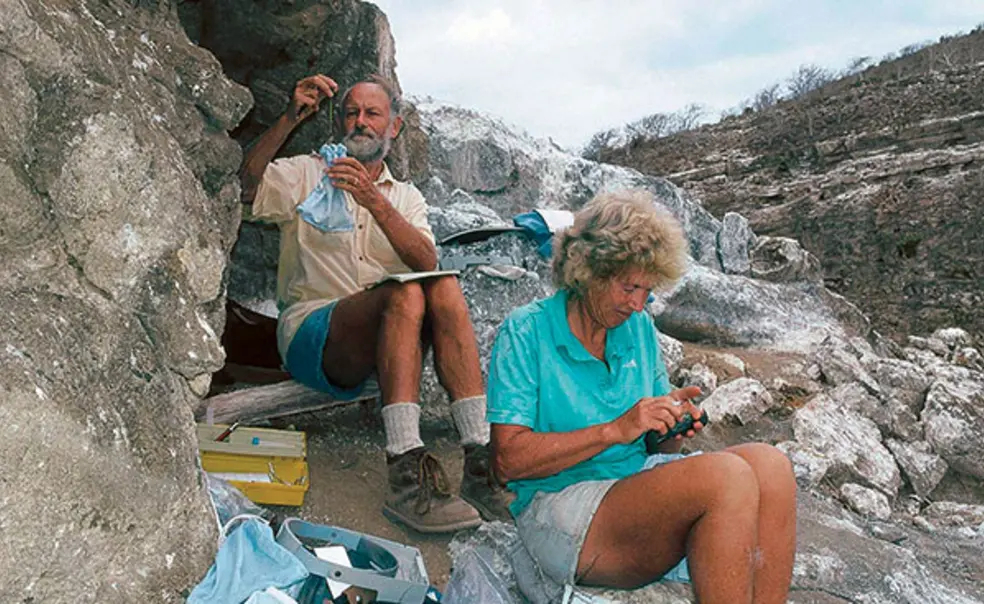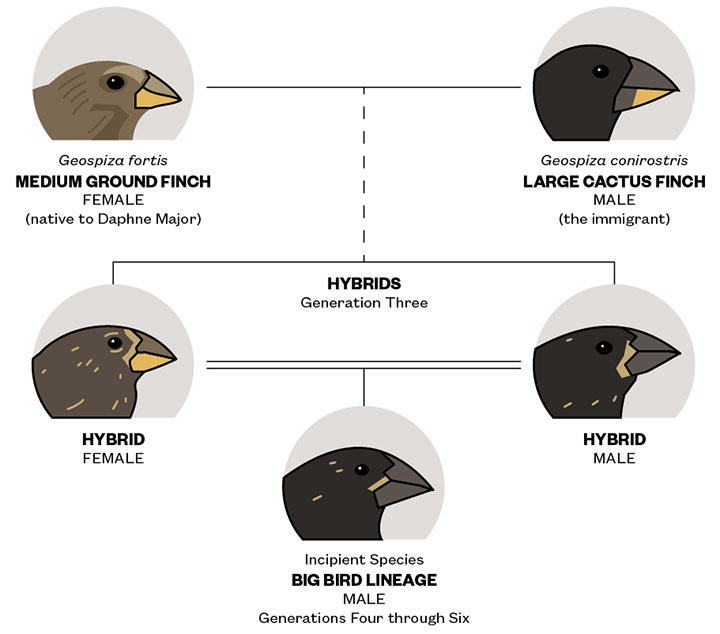Ecology and Evolutionary Biology: A Species in the Making
After 36 years of observation, Princeton scientists report incipient finch species
On a near-treeless, half-mile-long volcanic island in the Pacific, the finches that helped inspire Darwin’s theories are again changing how scientists think about the origins of new species. For 40 years, Daphne Major, one of the smaller Galápagos Islands, has hosted annual research visits by evolutionary biologists Rosemary and Peter Grant. There, the husband-and-wife team of Princeton professors emeriti takes meticulous observations and genetic data to track how the island’s three finch species behave and evolve. And in a November paper published in Science, they announced that a fourth species is emerging before their eyes.
In 1981, a single large cactus finch — a species found only on and around Española Island, 80 miles to the south — arrived on Daphne Major. The interloper was 70 percent bigger than the largest native finch, and despite its unique song was able to mate with six of the native female ground finches over 13 years, resulting in 16 offspring. One pair’s offspring mated with another ground finch, but the five generations since this second pairing have bred only with one another, resulting in a lineage with its own unique song and disproportionally large beaks. Since finches find mates based on these cues, the interloper’s descendants are “reproductively isolated” — a biological criterion for a new species.The Grants have been cautious about naming these birds as a new, distinct species for fear that such intense inbreeding would cause the bird to go extinct. And yet the new lineage survives, says Peter. “An inbred lineage does not have much genetic diversity,” leaving them unprepared for new challenges like environmental change and disease, but “birds seem to be surprisingly well able to tolerate high levels of inbreeding,” he says. Future genetic mutations could increase the lineage’s diversity and resilience, but for now, the birds could easily be wiped out by a single epidemic.
That the rise — and potential failure — of a new species can play out with such a small cast over so few years suggests that similar hybrid breeding events might create new species all the time, all over the world, says Rosemary. “We don’t know how common [these scenarios] are, but suspect they are more common than is realized.”
The Galápagos finches were suitable for these events thanks to the many similar small-population species on the islands, incompletely isolated from one another by the sea. “And small, isolated environments are everywhere for small organisms,” Rosemary says. A series of ponds and lakes could play the same role for a group of frog or fish species as the Galápagos do for the finches. So the next new species could be coming soon to a pond near you.














No responses yet